Please use the following link to download the July 16, 2022 issue of the syəcəb
Author: Kim Kalliber
In need of a family adventure? Garden Treasures is a most nutritious option
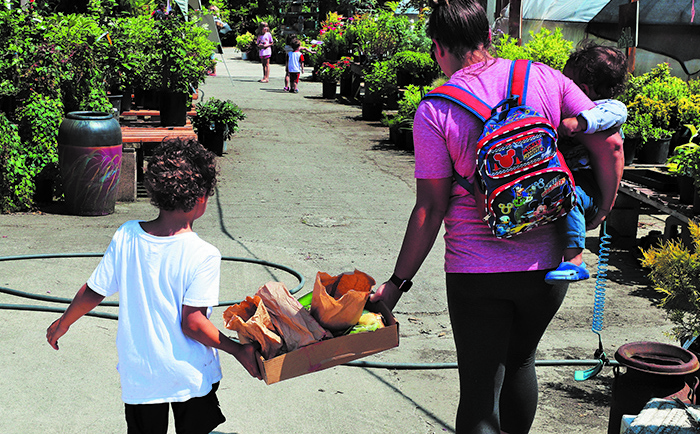
By Micheal Rios, Tulalip News
Has your household been desperately yearning for some kind of adventure to enjoy the summer weather, but concerns about sky high gas prices and costly food prices prevent this excursion from happening? Well, a day trip to Garden Treasures may be an ideal solution.
Garden Treasures plant nursery and local farm offers people of all ages and abilities an opportunity to enjoy the sunshine and warm temperatures while harvesting a variety of nutritious food, grown locally and sustainably. This organic u-pick farm is located just over 20 minutes from the heart of the Tulalip Reservation. Conveniently located off exit 208, Garden Treasurers offers the vibes of an everyday farmers market and garden center filled with fresh food for adults, and for the kiddos it’s an imaginative, bio-diverse mini jungle.
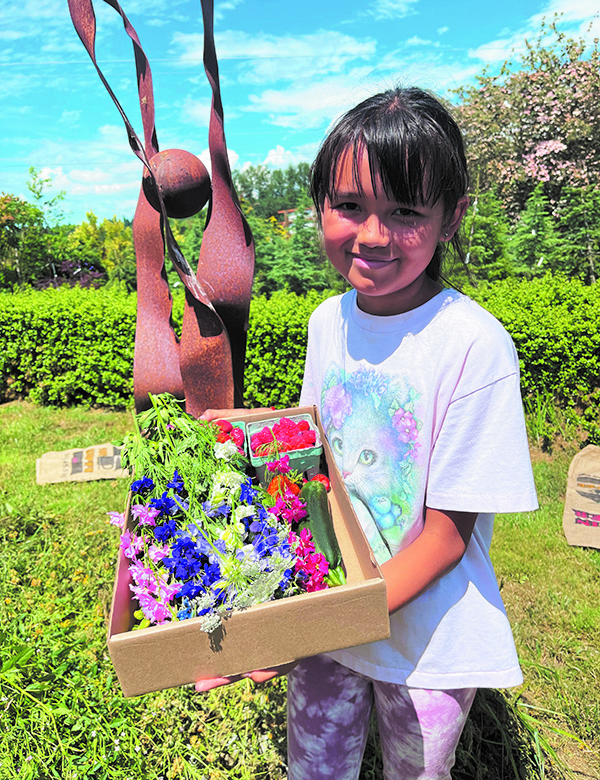
Taking the family on a naturally grown farm excursion to pick colorful produce, from delicious red strawberries to refreshing green zucchini, allows children to gain a sense of where their food comes from. It’s also an effective way to explain the process of how simple seeds grow into fresh foods full of life-giving nutrients. And it’s just a fun way to spend a summer day together making memories.
“I really enjoy having elders and kids visit the farm,” said farm regular, elder Dale Jones. “They have big smiles on their faces while enjoying the opportunity to be out in the farm and eat the fresh foods. The kids can see how the food grows and they learn how it’s better for them than fast food and candy. Too many of our people our battling diabetes and obesity because they learned bad eating habits as kids. Making fruits and vegetables a priority at a young age can really make a lifetime’s worth of impact.”
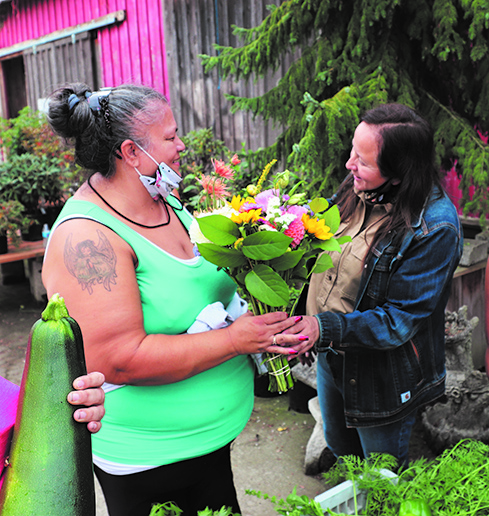
Spending time outdoors while wandering the vast berry fields and green houses at Garden Treasurers is an opportunity to get back to nature, both physically and spiritually. Their seasonal u-pick garden is currently filled with an assortment of flowers, perfectly ripe raspberries and strawberries, and a variety of vegetables, like bell peppers, zucchini, lettuce and garlic. They don’t use any synthetic chemicals or fertilizers, so your u-pick experience is safe, clean, and all-natural.
Recently, Tulalip families, patients of the Tulalip Health Clinic, and Tulalip employees were encouraged to take full advantage of a unique partnership between Garden Treasures and Tulalip’s own award-winning Diabetes Care and Prevention Program. From 10am to 4pm on July 7th, the Tulalip community turned out in droves to visit the farm, enjoy a healthy bite to eat, and receive a tour by Diabetes Prevention staff. Most importantly, each visitor was allowed to pick $30 worth of nutritious produce at no cost.
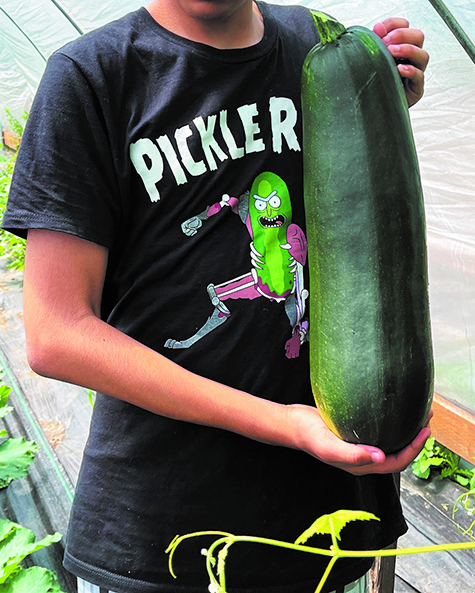
Unlike overly priced grocery stores and organic shops, $30 worth of fruits and vegetables at Garden Treasures goes a long way. You can easily pick an assortment of sweet and spicy peppers, enough raspberries for the kids to snack on for days, some herbs to season up your favorite meals, and even make a flower bouquet with the $30 credit. Numerous Tulalip citizens did just that. For some, it was their first time ever hand-picking veggies.
Donna and Jim Furchert brought their daughters, Joy and Patience, to Garden Treasures during a previous community day and came away with quite the colorful harvest. “We’ve never picked fresh fruit or fresh veggies before, so I wanted us to experience this as a family,” explained Donna. “We’re going to incorporate everything we picked into our dinners over the next few days.”
Young Patience said she liked digging for peppers the most and was super excited to stumble upon the strawberry patch. She was seen devouring the bright red, heart-shaped berry straight off the bush at every opportunity.
Michelle Martin was another previous first timer to the Arlington farm. She brought her three young boys Anthony, Brayden and Caiden on an afternoon outing with their grandma and grandpa. “It was our first time out here and we absolutely love it!” said Michelle while perusing the fields. “Never knew we had a u-pick farm this close to the Reservation. This seems like an ideal way to get fresh veggies and fruit. My boys love fruits. They were excited to run around the farm to pick their own berries.”
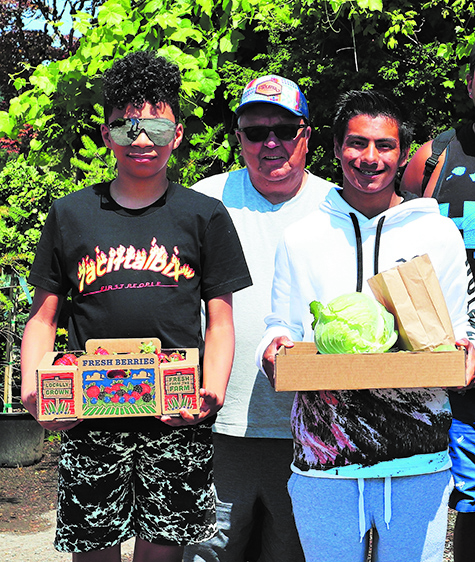
When 6-year-old Anthony and 4-year-old Brayden were told they could pick out some flowers to make their mom a bouquet, they quickly scoured the spacious flower gardens for a dazzling floral collection.
For those desiring to eat healthier and escape the sugar-filled, processed foods wasteland, Garden Treasurers is an oasis. Its numerous gardens, greenhouses and sun lit fields offer a variety of essential nutrients and vitamins that can make everyday meals more nutritious. Those who eat more fruits and vegetables as part of an overall healthy diet are likely to have a reduced risk of chronic diseases and a better immune system. Plus, eating fresh produce will make you feel better and have more natural energy to take on every day challenges of the 21st century.
In addition to all the health benefits is the wisdom and positive encouragement the dedicated Diabetes Care and Prevention Program staff imparted on those visiting the farm. They were willing to assist in produce selections, answer any questions, and offer advice about healthy meal making and dietary requirements for those managing diabetes.
“I am getting to an age in life when it’s important to pass down knowledge and share my gifts with others, especially the younger generation,” explained Roni Leahy, Diabetes Program coordinator. “I love being with the people and listening to them talk about their experiences in the garden or the kids discovering how the plants they eat grow. It is such a precious opportunity to talk about the plants and how important they are in health of our bodies. This truly is prevention of diabetes and other chronic diseases.”
“My favorite part is seeing the community members and their families out at the farm enjoying the vegetables and knowing they are going to go home and prepare a meal they will all remember and enjoy,” added Brooke Morrison, Diabetes Program assistant.
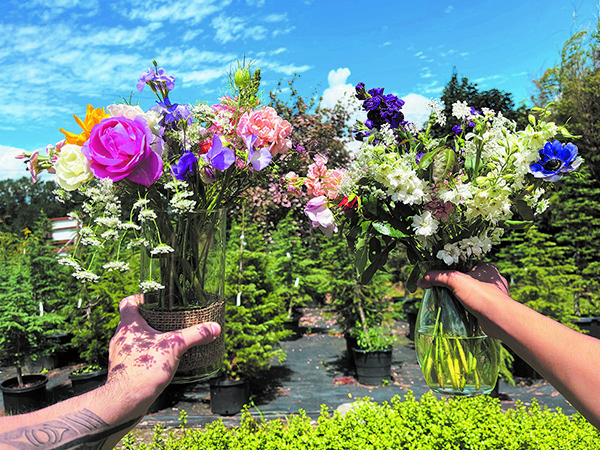
To review, visiting Gardening Treasures u-pick farm to harvest the freshest foods can boost your entire family’s health without creating a dent in your wallet. Bringing the kids can only help them create a lasting relationship with their natural world, while planting seeds of curiosity and excitement about eating a variety of locally-grown, organic food. Who knows, maybe a Garden Treasures adventure will be the inspiration your family needs to plant a garden at home.
During the summer months, the farm offers some of the best produce around. It couldn’t’ be more convenient to try and grow a diverse palette of seasonal products for a single meal, or stock up the pantry for winter. The next few weeks are an opportune time to find sweet strawberries, delicious raspberries and a number of crunchy veggies at your local u-pick farm.
Garden Treasures is open Tuesday – Sunday from 9:00am to 6:00pm, with the freshest fruits and vegetables available daily.
Lushootseed Language Camp is underway
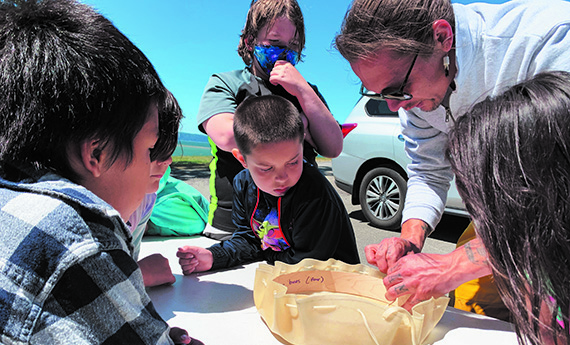
By Shaelyn Smead, Tulalip News
For over 25 years, the Lushootseed Language Camp has helped create a better understanding of our language within Tulalip youth. This popular two-week venture allows tribal youth ages 5-12 the opportunity to learn Lushootseed, implement it in their daily lives, and understand more of the history behind the language and the culture that surrounds it.
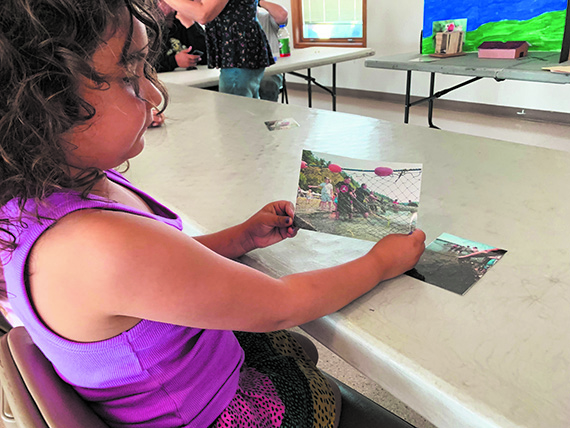
Lushootseed teacher Natosha Gobin said, “The past three years we’ve been developing curriculum that is being implemented at the Early Learning Academy, and that’s based on the four seasons in the year. We’ve been excited for this because we want the language that the kids learn to be relevant to their daily lives. This year’s camp is inspired from that curriculum. In the summer, when they look out into the water, they can identify things in our language like seeing our fishermen, the boats heading out to go crabbing, and the hustle and bustle of the marina. We want to make sure that they can use the language year-round, and that they are recognizing what they’re learning with things that take place in the community.”
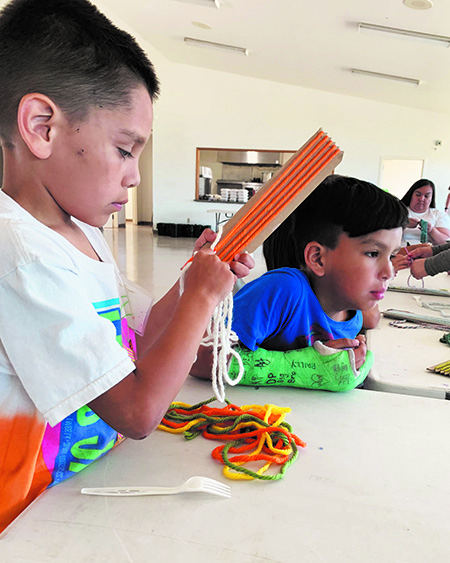
The camp provides daily groups, consisting of learning the language and basic words, weaving, accessing tablets with Lushootseed based apps, art projects, language games, traditional teachings, Lushootseed songs, building drums, and prepping for a Lushootseed based play that they will perform at the end of the week.
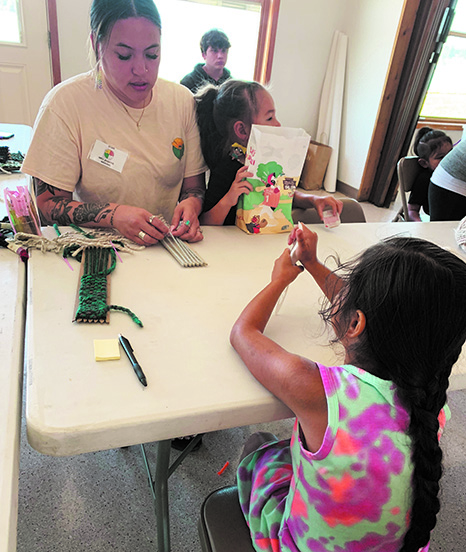
You can feel the energy in the room, and the excitement in the kids’ spirits as they learn their native language and honor their ancestors before them. One of the kids in attendance said, “I love camp, I’m getting really good!” That same enthusiasm has carried on for many years, as some of the camp’s volunteers, and staff like Maria Rios, used to be students that attended the language camp long before.
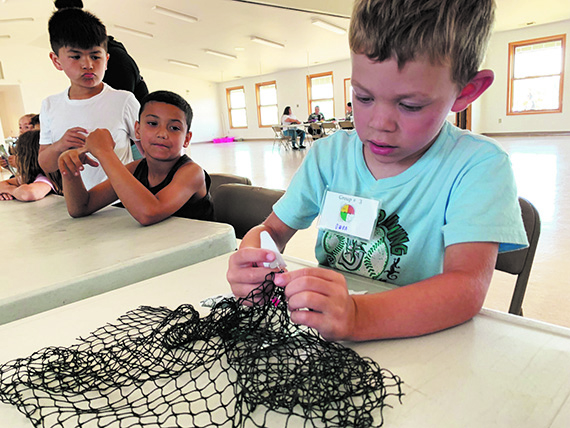
Other than language, the camp also focuses on building up tribal youth through teachings. “We circle up first thing in the morning and we pass on traditions of being respectful. Teaching them the words for ‘listen’, ‘pay attention’ will reinforce everything within the classrooms and at home” Natosha said.
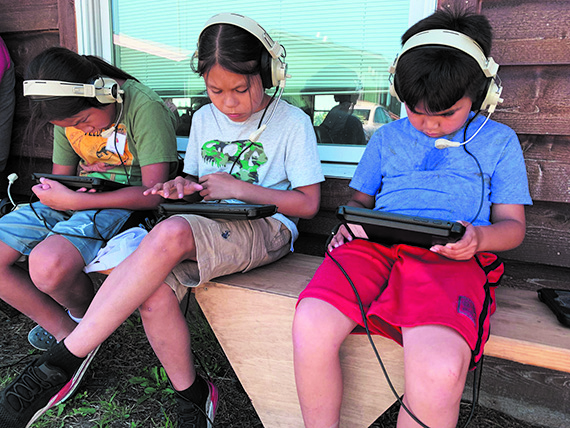
Natosha added that the goal is to outreach to as many tribal youths as possible so that Lushootseed will be integrated more in everyday life at Tulalip, “We want everyone to know the language. These little seeds that we’re planting within all of the kids, that’s what we look forward to – watching the language survive.”
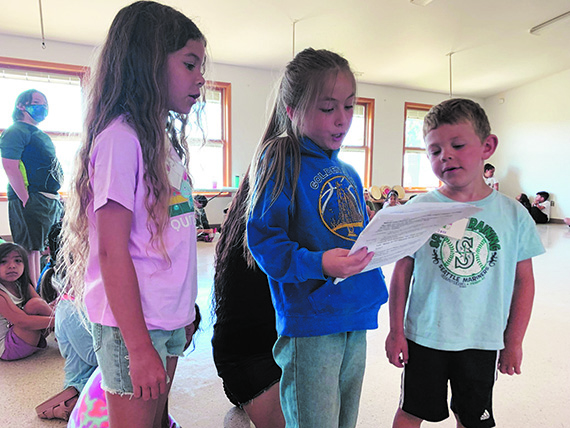
The camp will continue its second week July 18-22 at the Kenny Moses Building. If you know any tribal children 5-12 that would be interested in being apart of the camp, please sign up and contact Natosha Gobin at ngobin@tulaliptribes-nsn.gov or Michele Balagot at mbalagot@tulaliptribes-nsn.gov.
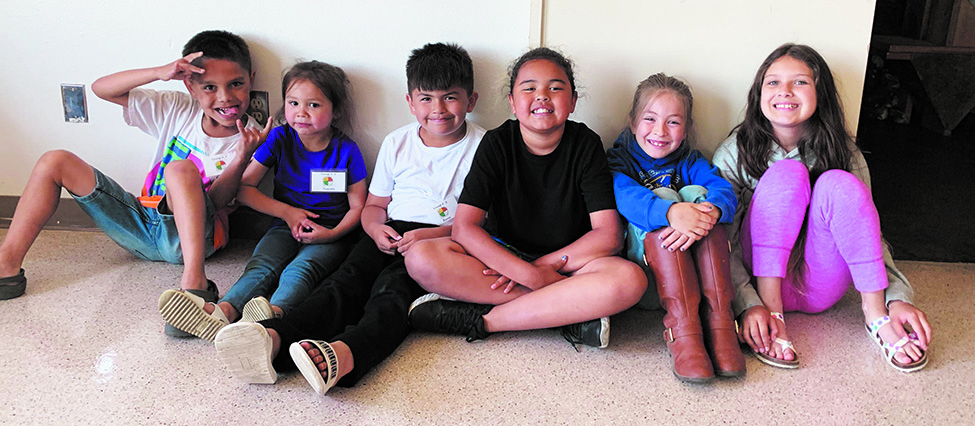
July 9, 2022 syəcəb
Please use the following link to download the July 9, 2022 issue of the syəcəb
Teachings of the Cedar tree
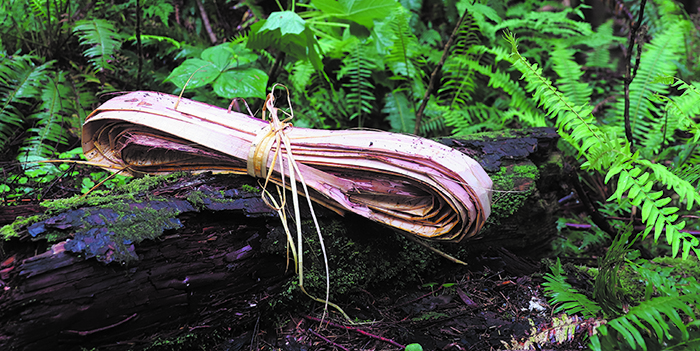
By Micheal Rios, Tulalip News
Since time immemorial, Coast Salish people have maintained an interdependent relationship with the luscious, green forests and powerful, blue waterways of the Pacific Northwest. Treating the natural environment as a shared resource revolving around the needs of community make it impossible not to have a deep respect for cultural traditions and Creator’s many gifts.
The Tulalip Tribes teach their citizens at a young age how the Creator gave them Cedar to sustain their lifeways. Out of respect for that everlasting connection, prayer is offered to honor the tree’s spirit before harvesting its sacred bark, branches and roots for traditional medicines, clothing, and various crafts.
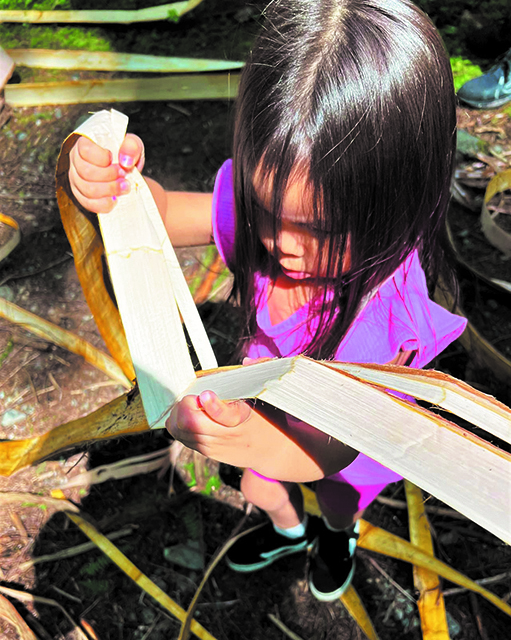
“Pray, pull, peel …it’s so peaceful being out [in our traditional homelands]. Being disconnected from the busyness of daily life is refreshing and the silence is healing,” reflected Natosha Gobin after her time spent walking in the shadows of her ancestors in the dense Pacific Northwest woodlands, harvesting cedar. “It’s amazing to watch the experienced ones of the group pull strips and separate them with ease. This is just one of the many ways to stay connected with not only each other but our ancestors. This is how we keep their teachings alive.”
Cedar is an evergreen tree that grows with towering abundance in our local forests. It is viewed as a strong medicine as it nurtures and protects many properties associated with our modern-day ceremonies, such as Salmon Ceremony, Treaty Days and coastal jams.
For countless generations, Cedar was the perfect resource; providing the means to create tools, baskets, carvings, canoes and, yes, even baby diapers to our ancestors. That’s without mentioning its robust use for medicinal and spiritual purposes, as used to in purifying essential oils, tasty teas, and healing balms.
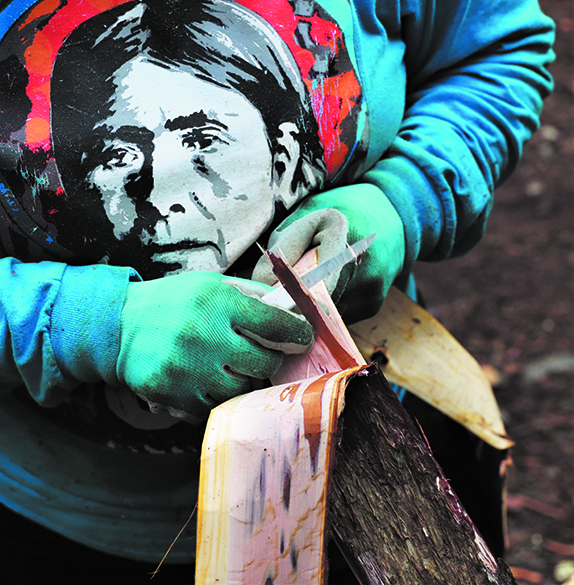
The teachings of the Cedar tree have survived genocide, colonialism and forced assimilation. Even now, as our communities are still healing from traumas inflicted by a global pandemic, many tribal members look to their cultural foundations for hope and strength. Armed with ancestral knowledge, we know regardless of the adversary, our traditions will persevere.
“I love being in the forest because it’s my second home,” said Cedar weaver virtuoso Jamie Sheldon. “As Tulalip, nature is our number one priority. Being in the forest calms the spirit, with all the sights and sounds of the forest bringing a peace of mind like no other.”
After 20+ years of perfecting her basket weaving craft, Jamie still speaks about learning the intricate basket making process from her mom and aunties like it was only yesterday. Similar to a beloved holiday, she and her family look forward to Tulalip’s annual Cedar harvest coordinated by the Tribe’s Forestry Division and Washington State’s Department of Natural Resources.
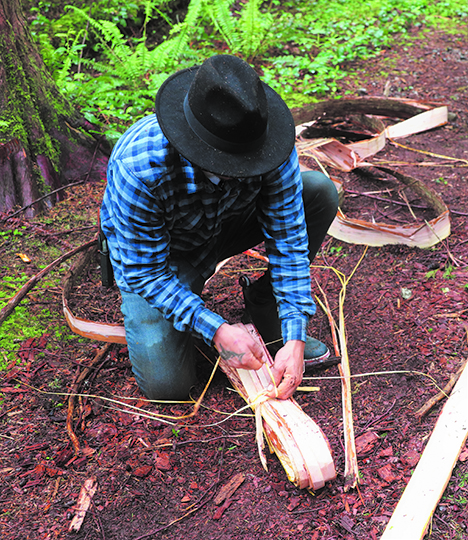
Although the circumstances of the past few summers may be unusual, the expectations remain the same – those whose lifeblood is woven with golden strips of Cedar must have their Treaty-protected time in the forest to harvest.
Mid-June to mid-July is ideal harvesting season because that’s when Cedar sap is running with a consistency of water, making the bark pulls easy for Elders and kiddos alike. Tribal members of all ages know the wondering feeling associated with a beautiful 70-foot Cedar pull.
Master weavers, elders, and youth alike echo the same Cedar harvesting techniques employed by their ancestors. With an axe or saw and carving knife, they skillfully remove strips of bark from the tree. They then shave off a small section of the rough bark, revealing a smooth, golden inner layer that is then further separated into strips or shredded for finely used weaving material.
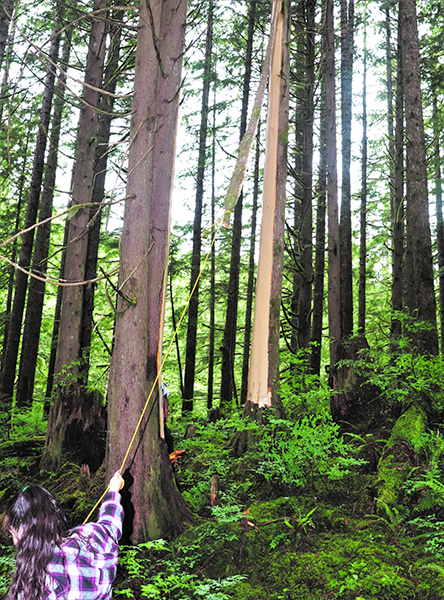
After harvest, the Cedar strips are typically laid out to dry for six-months to a year before being utilized for skillfully crafted baskets, hats and other ceremonial regalia, like capes, skirts and headbands.
“It’s beautiful getting out of the house, getting out into the woods, and listening to the forest. Hearing the rain fall, the gentle breeze as it rustles the tree leaves, and the birds chirping just calms my spirit and gives me energy to continue on,” described Sara Andres. She uses her harvested materials for naming ceremonies and donations to Hibulb Cultural Center’s weaving Wednesdays.
A contingent of local Natives from surrounding Tribes were given the opportunity to learn the essentials of Cedar harvesting this year thanks to the nonprofit Indigenous Beginnings and their support from Tulalip artists Mike and Rae Anne Gobin.
Many Native youth also participated in this season’s harvest, gathering Cedar strips for Elders and learning invaluable techniques for separating the smooth inner bark from the rough outer bark. For some it was their very first trip to gather Cedar, while for others it was another step in the continual journey to reconnect with spirits of past generations.
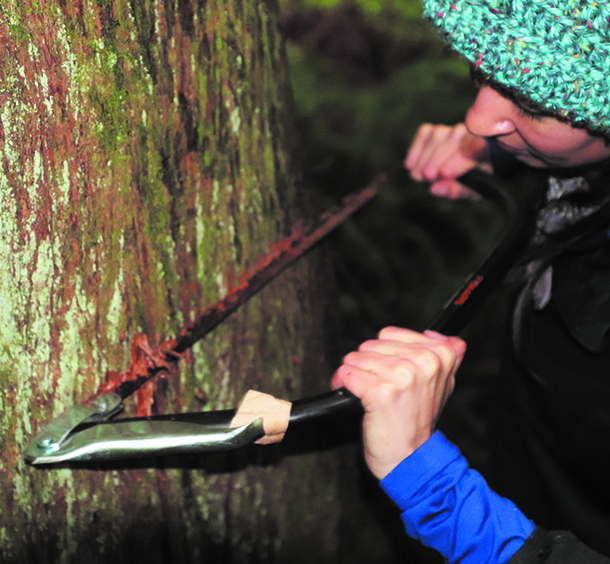
“So thankful for Natural Resources and the Rediscovery Program who constantly advocate and work hard so we can have access to gathering locations,” said Theresa Sheldon while using a carving knife to meticulously strip her Cedar. “Their work is appreciated and much needed as more and more traditional areas are being gated off and made harder to access.
“Taking our children out to learn how our people harvested Cedar is a gift,” she continued. “We are able to share with our young ones that our people have always cared for the grandmother Cedar trees and in return they care for us by providing clothing and protection from the elements. Appreciating each other, sharing our energy together, and respecting our ancestors by teaching our children how to value nature is who we are as a people.”
Those same traditional teachings are practiced today and continue to thrive being passed down to from one generation to the next. Teachings of the powerful Cedar tree remain obtainable to the Coast Salish peoples as they continue to journey into their ancestral woodlands and gather red and yellow cedar.
Our annual cedar harvests are made possible by collaborative efforts between multiple parties and agencies, both internally within Tulalip Natural Resources and externally with Washington State’s DNR. To ensure continued opportunities for the Tulalip citizenry and our local partners, arrangements are typically made a year in advance to properly plan and secure harvesting sites.
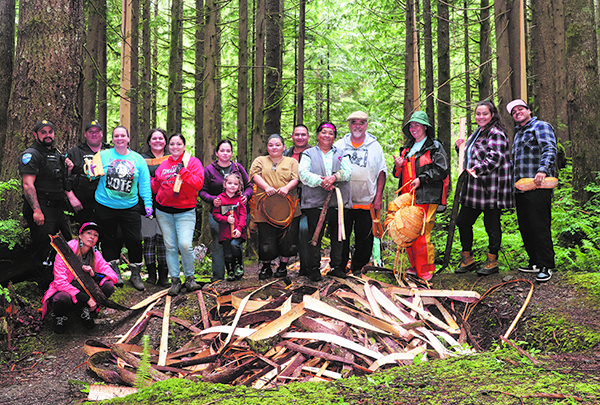
Coast Salish tribes’ cyclical relationship with Cedar cannot be understated. Our ancestors relied on the magnificent tree as an integral part of life on the Northwest Coast. From birth to death, Cedar trees provide generously for the needs of the people – materially, ceremonially and medicinally. These teachings have not been lost. They are thriving.
The history of native women’s reproductive rights
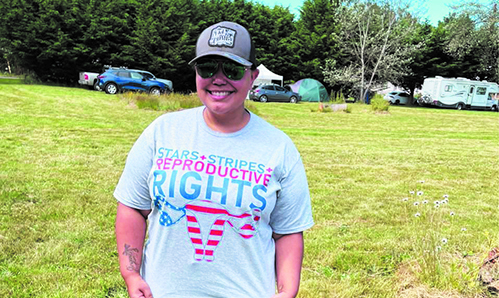
By Shaelyn Smead, Tulalip News
The June 24 Supreme Court overturn of Roe v. Wade has taken over recent political discussions, and people are taking a deep dive into its origins, and a closer look at how it affects minority communities.
A decision that was once determined in 1973, has now changed so many factors around women’s reproductive systems and healthcare in 2022, and many women are left in disarray. Protest efforts focused on feminist, civil rights, and anti-government movements that people in America fought hard for in the ‘70s, also opened up another level of importance for tribal communities.
It is no surprise that the history between natives and the American government and the control they’ve had over tribal communities have had negative outcomes. In 1851, Native Americans were forced onto reservations, shortly after executive orders and agreements established federal responsibility for the provision of healthcare for tribal members. For decades, natives struggled with poverty, and as a biproduct, depended on government organizations like the Indian Health Service (IHS), Department of Health, Education and Welfare (HEW) and the Bureau of Indian Affairs (BIA). This forced dependence on government organizations gatewayed towards a major population decline in tribal communities, and a new rise in government abuse towards Native American women.
In an attempt for population control in the 1960’s and 1970’s, the IHS and participating doctors begin performing sterilizations on Native American women. These horrific attempts were made to diminish the amount of government supported households within tribal communities. The physicians even went as far as saying that it would ‘improve Native American’s financial situation and their family’s quality of life’. And by targeting the communities that most regularly applied for Medicaid and Welfare, the federal government could decrease their spending on welfare programs.
The two main sterilization methods included Hysterectomies and Tubal Ligation. A hysterectomy is a procedure used to remove the uterus. Tubal ligation is a procedure in which a woman’s fallopian tubes are tied, blocked, or cut. In some of these procedures, Native American women were led to believe that the procedure was somehow reversible. And in most of these practices, it was believed to be performed without adequate understanding and patient’s consent. Meaning that the patient either had no idea that the procedure was taking place, or the procedure was presented as something it wasn’t. Because of this apathetic mentality towards Native American communities, these procedures were even administered to natives as young as 11 years old.
Tribal dependence through the IHS, the HEW, and the BIA robbed native women of the children they could have had, and jeopardized future generation existence. According to the American Indian Culture and Research Journal, the HEW funded 90% of the annual sterilization costs for poor people. Since then, a multitude of native organizations have since came forward and accused these government organizations for committing these heinous acts on approximately 25%-40% of Native American women of childbearing age. Sadly, this violation of our human rights was powerful, and according to the US Department of Commerce, Bureau of Census, the average birth rate of Native American women being 3.29 in the ‘70s quickly fell to 1.3 in the ‘80s.

Native American communities lost economic and political power by not being able to reproduce at the same rate as their white counterparts. There is power in numbers, and less of a native population meant less efforts and votes towards Native American rights. These monstrous acts also increased the risk of extinction of the Native American people and our culture that embodies us.
It wasn’t until 1973-1976 when the Government Accountability Office (GAO) began doing research and investigating the numbers of Native American sterilizations and found that IHS’ four out of the twelve areas that they studied were noncompliant with the policies regulating consent to sterilization. The GAO study, involved Albuquerque, Phoenix, Oklahoma City, and Aberdeen, South Dakota. The number of sterilizations would’ve been comparable to 452,000 non-native women. Even though the other eight IHS areas were not studied, it was enough for the GOA to understand what a major setback this was for native women.
Although Latinas, African-Americans, and Native Americans all suffered tremendously during this time, natives were easier targets because of their social invisibility, smaller numbers, and laws that were already instated working against them. It took many years of constant pressure from women and minorities in America, news reports, hearings, and efforts put forth by tribal communities, where the light was finally shined on forced sterilizations. Eventually new federal regulations were adapted, and new acts like the Indian Child Welfare Act in 1978, instilled more protection over native families from the American government.
In addition to Roe v. Wade, the Supreme Court’s decision to overturn McGirt v. Oklahoma v. Castro-Huerta, has created new risks for tribal sovereignty. These specific decisions continue to act as possible stepping stones that blur the lines between the American government and native women’s reproductive systems. Such a grey area, that it threatens the idea of a world that our people once knew and were forced to endure.
The Tulalip Community Health Department released a statement on the issue saying, “In light of today’s ruling to overturn Roe vs Wade: please know that Tulalip community health will continue to support each personal decision of their reproductive health. We are a safe place to ask questions and reach out for help.”
If history as Native Americans in the US has taught us anything, it is how important it is to continue to protect ourselves, our community, and our future. We have to get more involved, and continue to have a voice.
Traditional Foods for the People: Tulalip Tribes distributes King Salmon to it’s membership
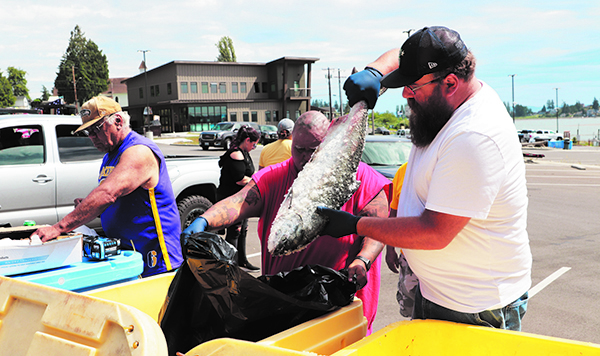
By Kalvin Valdillez, Tulalip News
“The salmon is an important part of our upbringing, we’re people who relate to the water,” expressed Tulalip elder, William Williams. “This distribution is helpful to me, my family, to everybody. A good way for all of us to get in touch with each other, by getting a hold of, and sharing, this salmon.”
Nearly one month ago, Tulalip tribal members engaged in a ceremony to honor the yubəč, the king salmon. This important traditional event is held at the start of every fishing season to thank the salmon for providing sustenance to the people and to bless the tribal fishermen. Salmon are a key element to the Salishan diet and have been for generations, stretching back to the start of time. It’s no wonder the Tulalip people hold the delectable and nutritious species in such high regard.
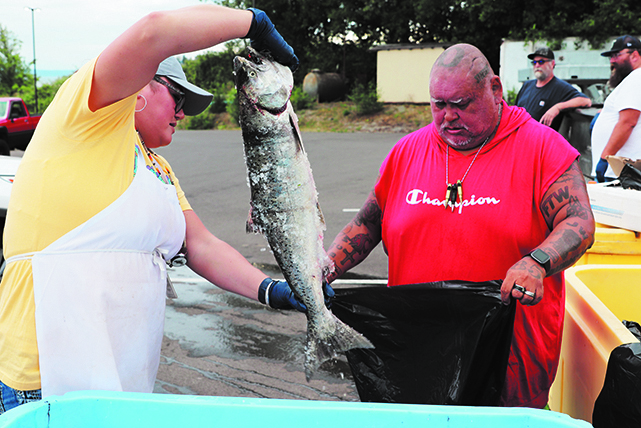
“It’s what we lived-off of,” said tribal member, Melissa Gobin. “It’s coming back to our original diet and helping our tribal fishermen at the same time.”
In an effort to provide traditional foods for the people and connect the community to the tribe’s way of life, Tulalip purchased hundreds of pounds of king salmon for its membership. And to make a wonderful gesture even greater, the Tribe bought the salmon directly from the tribal fishermen.
Tribal members over the age of 18 were eligible to obtain one whole salmon each. Distribution days were held on June 30th, and July 5th and 7th from 3:00 p.m. to 5:00 p.m. Elders were offered preference and were also encouraged to go to the front of the line to receive their salmon.
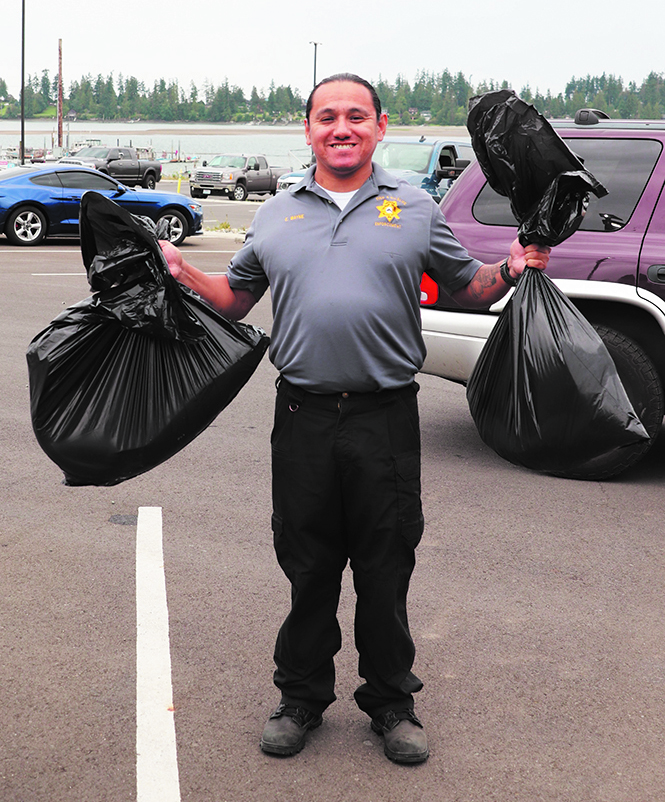
“This is something the Tribe has been wanting to do for a while,” explained Tulalip’s Natural and Cultural Resources Executive Director, Jason Gobin. “We were able to get some funds this year. We’ve done smaller distributions in the past, of hatchery surplus fish and whatnot, but this is the first big distribution. Hopefully we’ll be able to continue this on a yearly basis for the membership.”
The salmon were distributed to Tulalip tribal members at the parking lot of the local marina. A steady line of cars trickled-in throughout the cloudy, yet warm, summer afternoon of July 5th. The people happily exchanged good-humored banter with the crew handing out the fish and conversed about the recent holiday. The salmon were in large crates of ice, and one-by-one they were scooped out and placed in strong plastic bags for the people to transport to their homes with the least mess possible.
Numerous families traveled to the marina together and picked up their fish in bulk, and many people got out of their vehicles to check out all the salmon in the crates.
“I came out to get fish to share with my mom, that way she can eat some healthy fish. I think it’s really awesome and cool that the Tribe is giving back,” exclaimed Joseph Hatch as he waited patiently in a line of cars, tribal-ID ready in-hand.
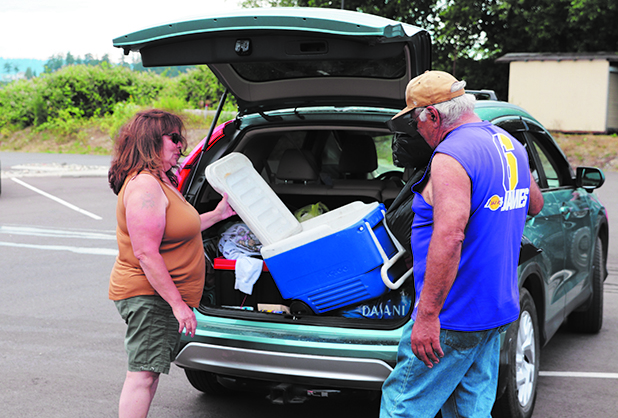
While getting his personal cooler out of the back of his pick-up, Tribal member Alan Cortez shared, “I used to work at the hatchery and bring salmon home all the time. Now that I’m retired, it’s a blessing to get this. It’s an important part of our diet, it’s just like me going out hunting.”
The salmon distribution is a great way to feed the community at large and in-turn is creating an opportunity for families to pass down traditional teachings, in regards to preparing the salmon for consumption.
“My husband seasons and broils it, we just love salmon!,” said Sonia Sohappy. “I believe it’s more healthy for you than the stuff we usually eat, and I’m trying to get my family to eat more healthy, so it helps us out. Win-win.”
After picking-up her salmon, Katie L. Jones stated that she knew exactly what she was going to do with her share of the distribution. “I am going to teach my boys, and other people who want to learn, how to can. I learned through Gayle Jones. We’re going to can salmon and give to people who need it, and keep some for ourselves. This helps feed our Indian and gives us traditional foods that we can enjoy at home.”
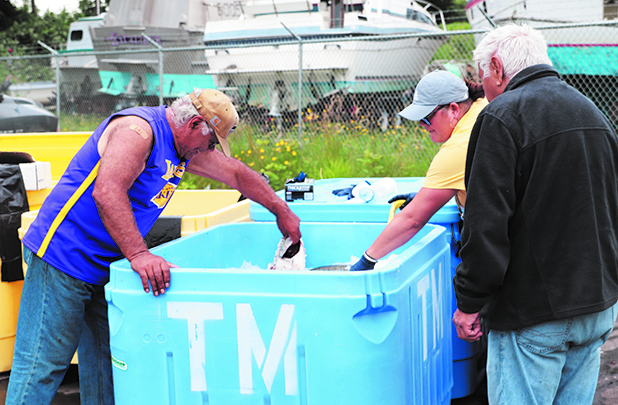
Jason explained that the fish distro is a good opportunity for non-fishing families to indulge in an integral piece of their traditional diet, as salmon may be a little more challenging to acquire for those who don’t have the ability, means, or necessary teachings to go out on the water.
“I’m fortunate enough to go out and catch my own. But this distribution, this salmon we’ve been able to get, is important to the community because it brings traditional foods to the table,” he said. “Especially for the elders who don’t have family members who are fishing. It’s important to be able to share with the community and share with the families. The salmon is not just for that one person, they’re taking that home and they’re going to share with their entire family. This really brings the community together – sharing in that salmon as they eat it, smoke it, use it, and do whatever they’re going to do with it.”
As Jason stated, this is the first major salmon distribution and it is something that the Tribe hopes to continue going forward.
When asked how he felt after receiving his salmon, Tulalip elder Marvin Jones simply put, “It feels real good anytime that you get a fish, because this is such an important part of our culture.”
Paul Eric Shay Jr.

July 6, 2000 – June 29, 2022
Paul Eric Shay Jr., 21, of Tulalip, WA passed away June 29, 2022. He was born July 6,, 2000 in Edmonds, WA to Paul and Nicole Shay. He graduated from Heritage High School where he played basketball., He was on a championship team that went to State. He was a sports junkie, knowing stats of all the players at eight years old. Was a coach and mentor for youth basketball. He was loved wherever he went and he treated everyone as family.
He was survived by his great grandfather, Richard Muir Sr.; great grandmother, Elizabeth Penn; grandparent’s Richard Muir Jr. (2 Dogs) and Teena Muir, and Kim and David Golden; siblings, Cierra (Trevor) Fryberg, Dalton (Brittney) Shay, Mason (Ayla) Shay, and Kendall Hayward; Nephews, Dylan Shay, Madex Fryberg; and niece Violet Fryberg; the love his life, Ariel Ellenwood; and several aunts, uncles and cousins. He was preceded in death by his father Paul Shay Sr. (Spooky); great grandmother Donna Muir; and grandmother Deanna Van Doorn. He was also preceded in death by his special brother, Jayden Brashears.
A celebration of his life will be held Wednesday, July 6, 2022 at 10 AM at the Tulalip Gathering Hall with burial to follow at Mission Beach Cemetery. Arrangements entrusted to Schaefer-Shipman Funeral Home.
Rose M. Buck
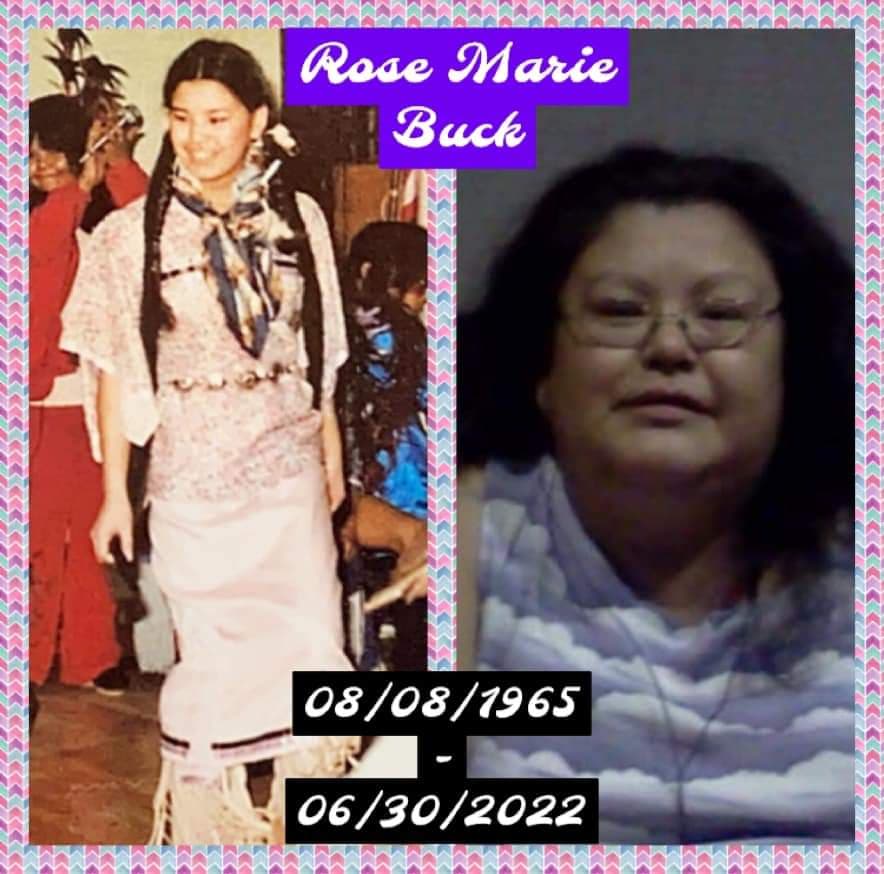
Sunrise: August 8, 1965 Sunset: June 30, 2022
The family of Rose Marie Buck regretfully announce that Rose passed away on June 30, 2022 at her home in La Conner WA.
Rose was brought up Seven Drum and was a member of the Spee-Bi-Dah Drum Group. She also danced Fancy and Team Dancing when she wasn’t singing on the drum. Rose leaves behind her mother Judi Patrick, siblings Marvin Edwards, JoAnn Begay (Landry), Francis Williams Sr. (Sugar Bill), children Gerry Williams, Michael Likakur, Tah-Sheena Williams, Charlene Williams. Preceding Rose in death are Bernard Williams Jr., Roberta Suppah, Baby boy Williams, Clarissa Williams, Bernard Williams III. Rose will come home to Tulalip for interment.
Arrangements by Shaefer-Shipman Funeral Home and The Tulalip Tribes. Service will be at 10am on Thursday, 07/07/2022, at the Gathering Hall in Tulalip WA
Tribal leaders demand dishonorable status for vets at Jan. 6th insurrection at Capital Building
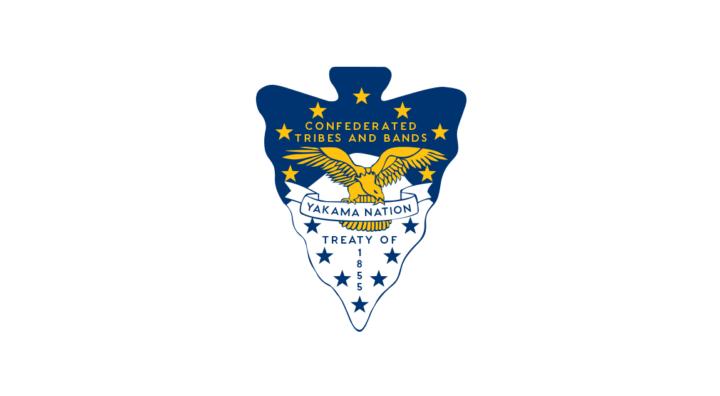
News from Yakama Nation
YAKAMA NATION AGENCY, YAKAMA RESERVATION – The National Congress of American Indians (“NCAI”), Affiliated Tribes of Northwest Indians (“ATNI”), and the Confederated Tribes and Bands of the Yakama Nation (“Yakama Nation”) call upon the Department of Defense to revoke and replace the discharge status of veterans with dishonorable discharges if convicted of participating in the January 6th, 2021 insurrection at the U.S. Capitol Building (“Insurrection”). The Yakama Nation issued this call among Tribal Leaders, starting with its own Tribal Council Resolution, because of the historically high rates of military service in Native American populations and the inherent understanding of veteran’s solemn duty to support and defend the Constitution.
The NCAI Resolution memorializes the response across Indian Country, “tribal veterans and leaders . . . believe that the attack on the United States Capitol is unconstitutional and against the morals and values of . . . service to their country and duty to protect.” Insurrection participants sought to destroy this Country’s tradition of the peaceful transfer of power, the sanctity of voting, and American federalism by attacking the certification of state electors.
According to a CBS News analysis of military service records, court documents, and attorney statements, at least nine current members of the military and more than 75 veterans have been arrested in connection with the Insurrection. The significance of veterans and active military members was apparent in released reports of specialized military doctrine and terminology used to provide strategic skills carried out to effectively breach the US Capitol Building. It is estimated that up to 15% of all Insurrection participants had military service backgrounds.
The Yakama Nation Resolution T-039-21, dated February 4, 2021, called the Insurrection a “domestic terrorist attack” that was promoted by the words and actions of the former Commander in Chief. The condemndation was subsequently adopted by ATNI on May 19, 2022 (Resolution #2022-28) and by NCAI on June 16, 2022 (Resolution #ANC-22-021).